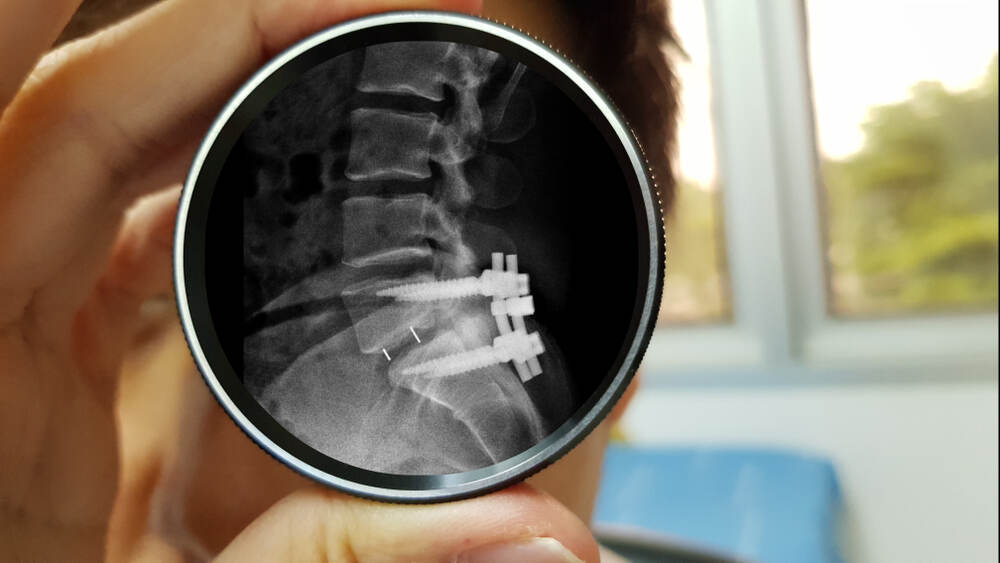Are you and your doctor exploring whether you are a better candidate for XLIF vs TLIF? Are you wondering how they are different?
Spinal fusion surgeries play a crucial role in the treatment of various spinal conditions, providing much-needed stability and relief to patients. Two commonly performed procedures, XLIF (eXtreme Lateral Interbody Fusion) and TLIF (Transforaminal Lumbar Interbody Fusion), have gained prominence in the field of spinal surgery. If you’re considering or researching these procedures, understanding their differences is vital to make an informed decision about your treatment options.
Let’s explore the intricacies of XLIF surgery and TLIF surgery, exploring their unique approaches, surgical techniques, indications, benefits, and potential risks. By examining the contrasting aspects of these procedures, we aim to equip you with the knowledge necessary to discuss and evaluate them with your doctor.
What is XLIF Spine Surgery?
XLIF stands for eXtreme Lateral Interbody Fusion. This is a surgical procedure commonly used in spinal fusion surgeries. Unlike traditional approaches that access the spine from the front or back, XLIF involves a lateral approach, accessing the spine through the patient’s side. This unique technique offers several advantages and considerations.
During an eXtreme Lateral Interbody Fusion procedure, the surgeon creates a small incision on the patient’s side, allowing access to the affected area of the spine. Through this lateral approach, the surgeon can navigate around important structures, such as nerves and blood vessels, minimizing the risk of damage. Additionally, the XLIF procedure provides a direct path to the intervertebral disc and vertebrae, simplifying the removal of damaged disc material and preparation for fusion.
XLIF is particularly suitable for certain spinal conditions, such as
- degenerative disc disease
- disc herniation
- spinal stenosis
The procedure allows for the restoration of disc height and decompression of nerves, thereby alleviating symptoms and promoting spinal stability. The placement of an interbody implant, usually made of a bone graft or a synthetic material, helps facilitate fusion between adjacent vertebrae, further enhancing stability. On the larger exposure of the disc space, this allows for a larger interbody cage to be placed allowing for a better fusion.
In terms of benefits, XLIF offers reduced blood loss, shorter hospital stays, and potentially faster recovery compared to traditional approaches. The lateral access minimizes the need to disrupt the muscles and soft tissues in the back or abdomen, resulting in less postoperative pain and a potentially quicker return to daily activities.
What is TLIF Spine Surgery?

TLIF, short for Transforaminal Lumbar Interbody Fusion, is a widely performed surgical procedure used in spinal fusion surgeries. Unlike XLIF, TLIF involves a posterior approach, accessing the spine through the patient’s back. This technique offers its own set of advantages and considerations.
During a TLIF fusion procedure, the surgeon creates an incision in the patient’s back to access the affected area of the spine. This posterior approach provides direct access to the intervertebral disc and vertebrae, allowing for the removal of damaged disc material, bone spurs, and preparation for fusion.
TLIF is commonly indicated for conditions such as degenerative disc disease, spondylolisthesis, and spinal instability. By removing the source of compression and instability, TLIF helps restore proper alignment, decompress nerves, and promote spinal stability. This is achieved by placing an interbody cage, typically made of a bone graft or a synthetic material, between the adjacent vertebrae, facilitating fusion and enhancing stability.
As we’ve explained on our website, there are a number of potential benefits to the TLIF procedure.
- Since only the lamina and facet joint on one side of the vertebrae are removed, the spine is less likely to destabilize after surgery.
- Fewer delicate spinal nerves need to be moved, resulting in less risk of nerve damage.
- Smaller incisions and less damage to muscle and surrounding tissues result in a faster, easier recovery, with fewer post-surgical risks and less reliance on pain medications.
XLIF vs. TLIF: Which is Right for You?
When it comes to spinal fusion surgeries, choosing the most appropriate procedure is a critical decision that should be made in consultation with a spine surgeon. Both XLIF and TLIF have their unique characteristics, advantages, and considerations. Here are some factors that the surgeon will consider when selecting the right procedure for your specific needs:
- Spinal condition and pathology
- Specific medical needs
- Indications and suitability
- Surgeon experience and training
As with all spine surgeries, a personalized treatment plan tailored to your unique needs will ensure the best possible outcome.



Recent Comments